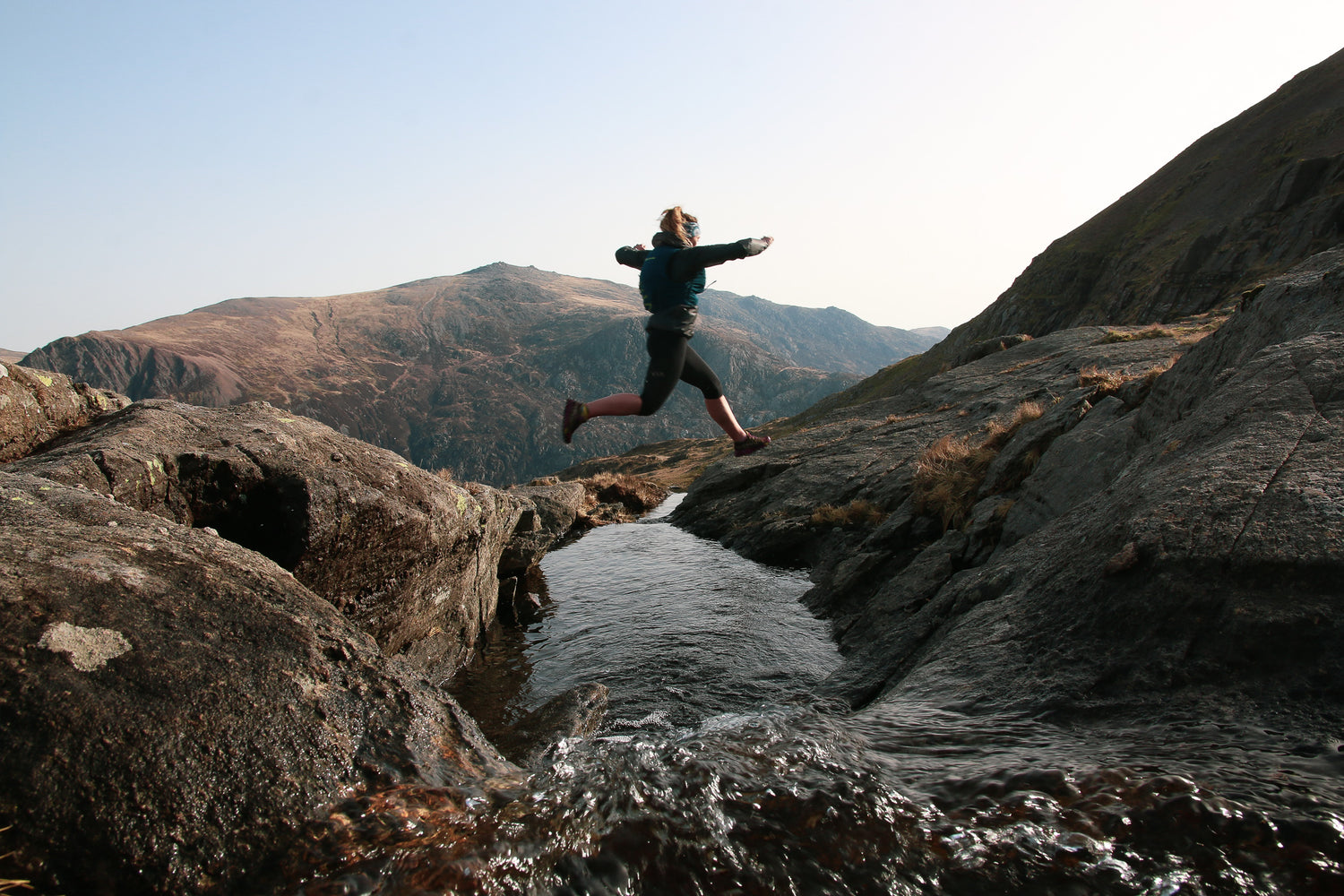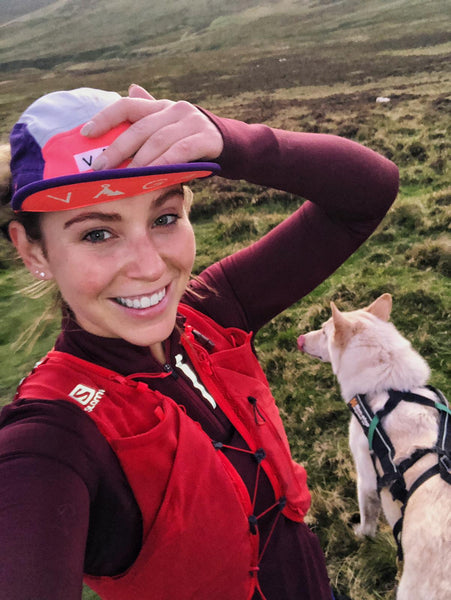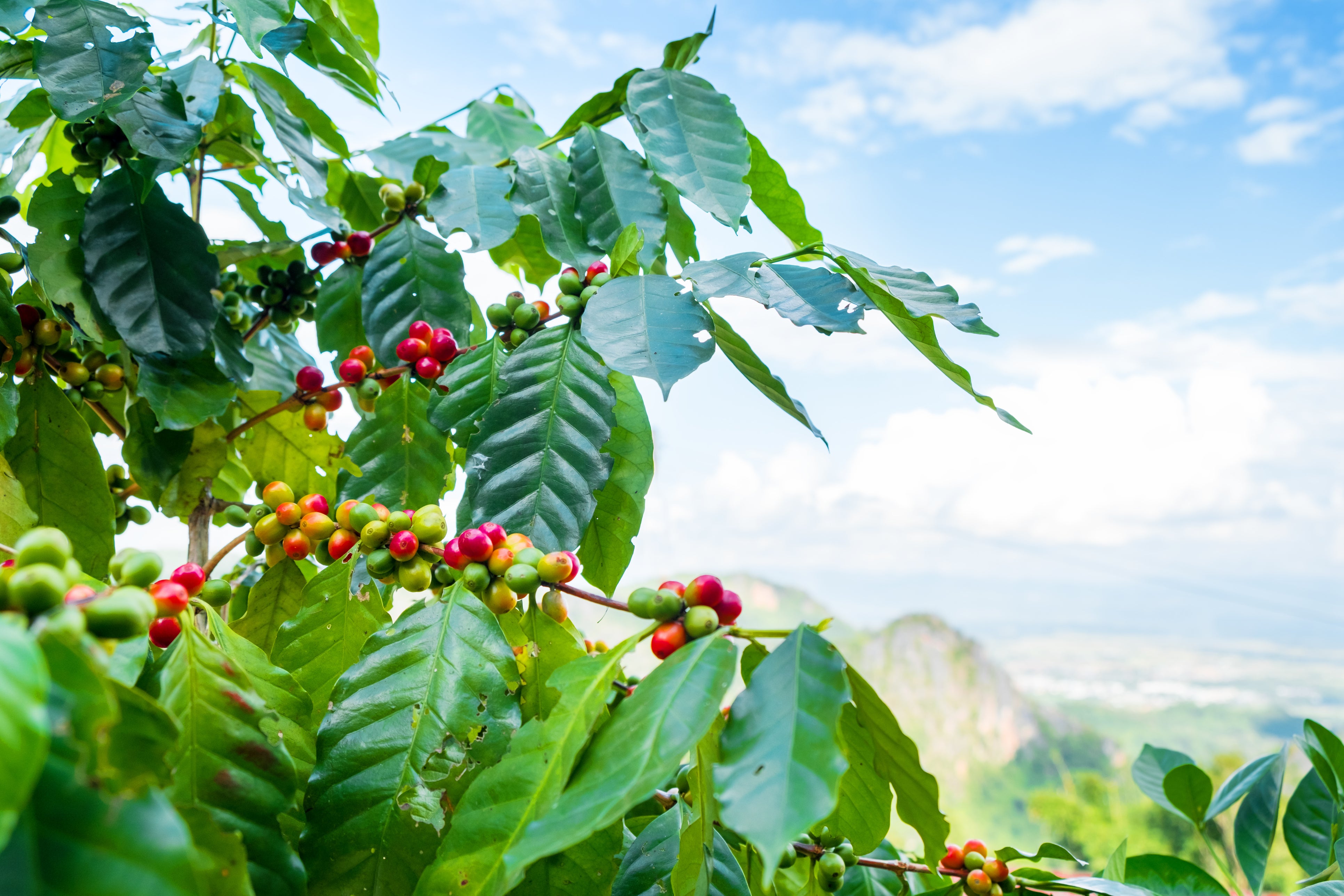Whether you're running a 5k, cycling a TT, or bench pressing a new 1 rep max, setting a new personal best might be more achievable than you think. Here are 5 easy ways that can help you smash through plateaus and start chalking up those PBs.

Joseph Hurley @hurley.joseph
HOW TO SET A NEW PERSONAL BEST
Even if you’re not a competitive athlete (maybe you’re just competing with your mates on Strava), monitoring your PBs is a great way to measure your progress and stay motivated. If you just so happen to smash a friend’s PB in the process then that’s all the more motivation!
The good news is that wherever you are in your fitness journey, almost all of us have the potential to improve on our current performance. Running faster, cycling further or lifting heavier, it’s all possible with the right approach.
Ready to find out how you can achieve your next personal best? 
Jonty Brown @chasingchangedoco
5 WAYS TO SET A NEW PB
1. Interval training
Sounds obvious right, but if you’re aiming to set a new PB, then you’ll need to improve your pace. Interval training is a great way to work on your speed.
The basic premise is you vary the intensity and speed in training sessions. Training for a 10k run for example? Try running 1k at a fast pace, walking for 2 minutes, and repeating a total of 3-5 times. You can then increase the distance and time of these intervals, or the number of repetitions.
Training in this way will have these benefits:
- Teach your body how to work with sudden bursts of speed when you need it to, i.e. the sprint finish of a race!
- Improve your aerobic and anaerobic capacity, helping you to sustain a higher speed more comfortably.
- strengthen your leg muscles.
- Improve your running economy and therefore form.
- Increase the resiliency of your tendons and ligaments leading to fewer injuries.

Rich Gill @rich.trails
My own fave interval session is pyramids. Here's how you do it:
- Run 7 intervals of 1, 2, 3, 4, 3, 2, 1 minutes in length.
- Rest for 90 seconds in between.
- Warm up and cool down with 10-15 mins casual running (the warm up is especially important for intervals).
- They're the best type of interval to do with mates if you do them 'out and back'. You all start in the same place then for say the 2 min interval you run out for 1 min, turn, then run back to the start. So no matter how fast you are, and how far you run, in the first half of the interval you all finish it back at the same starting place for the rest.
2. Pace yourself
The sun is shining, the race day atmosphere is electric and you’re perfectly fueled to feel the wind in your hair. It’s all too easy for the temptation to creep in to start a race too fast. But getting your pacing right is key for any PB attempt.
If you set off too fast and your effort level rockets, your body will try to get back to a more comfortable state, which means slowing down big time. So if you’re facing a longer workout, make sure to set a good pace that you can maintain throughout, or with a negative split (finishing faster than you started). This way you’ll have more energy towards the end of your workout or race to push and go for that new PB.

My top tips:
- Make sure you establish a target pace in training before a race or new PB attempt.
- Get a decent amount of shorter distance training in the 1-2 months before race day at your target pace (called the rule of 'race specificity').
- Don’t let those race day jitters swerve you off plan, stick to your target pace!
- Don't be tempted to race off too fast at the start with the muppets who haven't made a killer pace plan like you have 🚀.
3. Climb that hill
Incorporating more hills into your training routes is a great way to push towards that new PB. Running up hills is great for developing race pace, this is backed up by lots of studies including one by the Karolinska institute in Sweden. They found runners who hill train have greater running economy and overall muscle strength. It can also help you build injury resistance(1).

Kathryn Roberts @katttlr
If you’re based in London, you'll often find me running the infamous "Claw" - a 10k route up and down 5 of north London's steepest hills with over 300m elevation gain. All connecting together in Highgate Village. See you there!?
You basically have 2 options with hill training -
- Hill sprints on short, steep hills (c. 30-60 seconds per rep).
- Long, steady hill repeats on a lighter incline for longer reps (c.5-10mins or more).
A note of caution - hill sprints are more advanced and you should only tackle them if you're well conditioned.
There are loads of variations but my basic formula is
- Run hard uphill for c. 30 seconds.
- Walk back down to your starting point as the recovery.
- Turn and repeat 5-10 times.
- Make sure you don't overdo it too soon or you risk injury.
- Run at a speed that you can run all reps the same pace. If you slow by the last rep then it's likely one rep too many... this time.
- Tag on a good 10-15 min casual run before and after to warm up and cool down.
- Start with 5 reps then increase by one rep every 1-2 runs up to 10 total.
- When up to 10 reps you can split them into 2 groups of 2 reps with a 5-10 min steady jog between.
- Do this once a week max.
Alex Long @alexsophie_
4. Optimise your coffee routine
Yep that’s right, your favourite brew comes with a side of performance benefits (though be warned: not all coffee is created equal!!). Caffeine has long been touted as one of the only, legally, allowed performance-enhancing drugs 🙌. There are several mechanisms for its performance enhancing properties(2,3), including:
- It stimulates the central nervous system, resulting in decreased sensitivity to pain and a lower perception of exertion during exercise. Meaning you can keep going harder for longer without straying too far into a pain cave (or if you do you don't feel it!).
- Delayed fatigue through an increased dependence on fat as a source of energy. There is mixed research on this... but I know what I want to believe.
- It's ergogenic—meaning it gives you energy(4). Vital during sports of any kind. It’s also proven to be highly ergogenic for speed endurance(4). Which might explain all those customer PBs we’ve heard about!
- It could also potentially produce more sustainable and forceful muscle contractions. For example, in one study of cyclists(5), caffeine reduced muscle pain and increased speed in time trials.
More recently there's been an explosion in research into not only caffeine’s performance enhancing properties, but also polyphenols.
Polyphenols, like those we optimise for in Exhale coffee, have been reported to enhance both endurance and sprint performance as well as aid recovery.
So, if you’re itching to crush a new PB - fuel your training with Exhale's polyphenol-rich coffee!
To find out exactly when and how to strategically use healthy coffee to set a new PB, read my full guide here.
Or to buy some of our healthy, clean, organic coffee and give it a go for yourself head here.
5. Dial in your diet
They say you are what you eat, and indeed nutrition is another key factor for your next PB. It’s really important that you test out your nutrition plan before race day or PB attempts. This includes your meals beforehand (that’s dinner the night before and breakfast the morning of) and anything you’ll eat during if it’s an endurance sport.

Sam Thompson @ben_gunn_swimcyclerun
People love talking about pre-race nutrition, what you should and shouldn't eat. Ultimately you need to figure out what works best for you. Personally, I have a ton of digestive issues so my motto for the morning of an event is stick to whatever you know your stomach won't kick off over. For me this means avocado on sourdough and a double espresso! But as they say, everybody is different.
As a general rule of thumb, if you’re going 10k or more, you'd ideally fuel up 3-4 hours beforehand(6), with a meal high in carbs, moderate in protein and low in fat. A banana can’t hurt an hour or so before the whistle blows. Your glycogen stores can become depleted within one to two hours of running(7), so for runs lasting longer than 90 mins, make sure to refuel with energy gels or bars every 30 mins or so.
I have a diet very low in sugar and often train fasted. But on race day, especially if going for a PB, sugar comes into it's own as another performance enhancing drug! Our friends at Veloforte make my personal fave energy gels with nothing but natural ingredients. Try to avoid ones with dozens of unpronounceable ingredients, and don't use too many or you'll be running the diabetes gauntlet!
The Bottom Line
Most people can see improvements in their performance by changing just a few aspects of their practice and race-day routine. Follow the steps outlined in this blog and you’ll have a solid foundation to set that new personal best.
Exhale Coffee is the first speciality grade, organic coffee in the UK to be sourced and roasted to support your health and wellness, as well as your performance. Head here to give us a try today then let me know how you get on!
Al x
Exhale co-founder

Luke Chase @lcdchase
Thanks to Team Exhale stalwarts for all the above pictures - Joseph Hurley, Jonty Brown, Rich Gill, Alex Long, Sam Thompson, Luke Chase and Kathryn Roberts.
Citations
1. https://books.google.lk/books?id=fvJ6DwAAQBAJ&pg=PA180&lpg=PA180&dq=Karolinska+Sweden+hill+sprints&source=bl&ots=5yKo-_dU3k&sig=ACfU3U2_z03knCYA60VIhAhLCYSjdpVCSw&hl=en&sa=X&ved=2ahUKEwi5lsH3te_2AhUqxjgGHUfBAOAQ6AF6BAguEAM#v=onepage&q=Karolinska%20Sweden%20hill%20sprints&f=false
2. https://pubmed.ncbi.nlm.nih.gov/30926628/
3. https://pubmed.ncbi.nlm.nih.gov/30298476/
4. https://pubmed.ncbi.nlm.nih.gov/19757860/
5. https://docksci.com/caffeines-ergogenic-effects-on-cycling-neuromuscular-and-perceptual-factors_5a92f41bd64ab2f72a1bf057.html
6. https://www.ncbi.nlm.nih.gov/pmc/articles/PMC4540168/
7. https://pubmed.ncbi.nlm.nih.gov/12015629/






Leave a comment
All comments are moderated before being published.
This site is protected by hCaptcha and the hCaptcha Privacy Policy and Terms of Service apply.